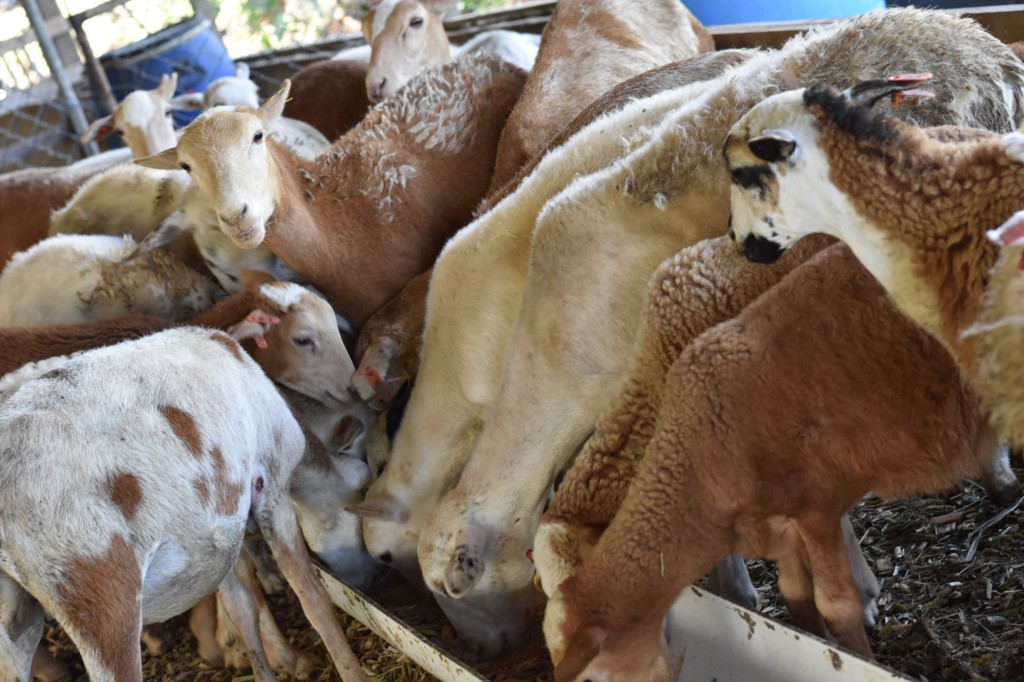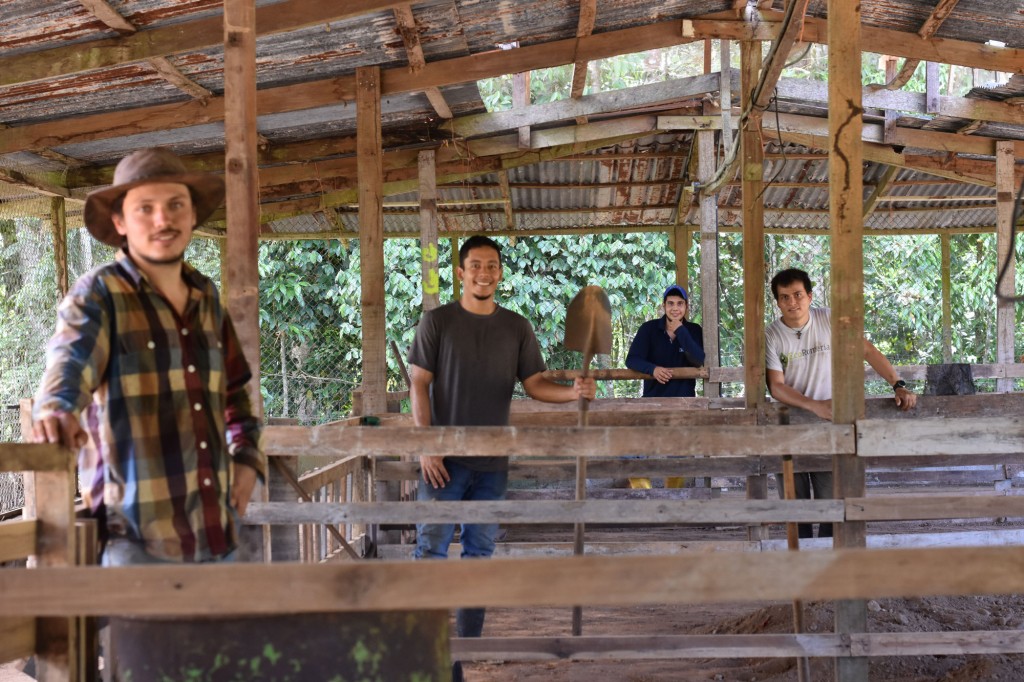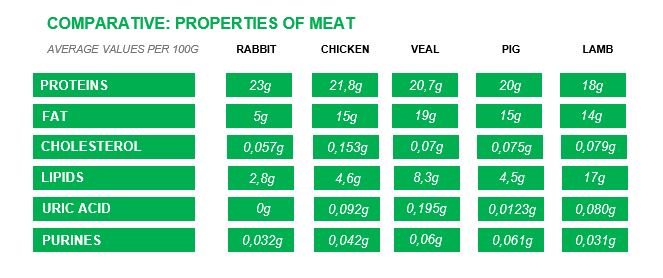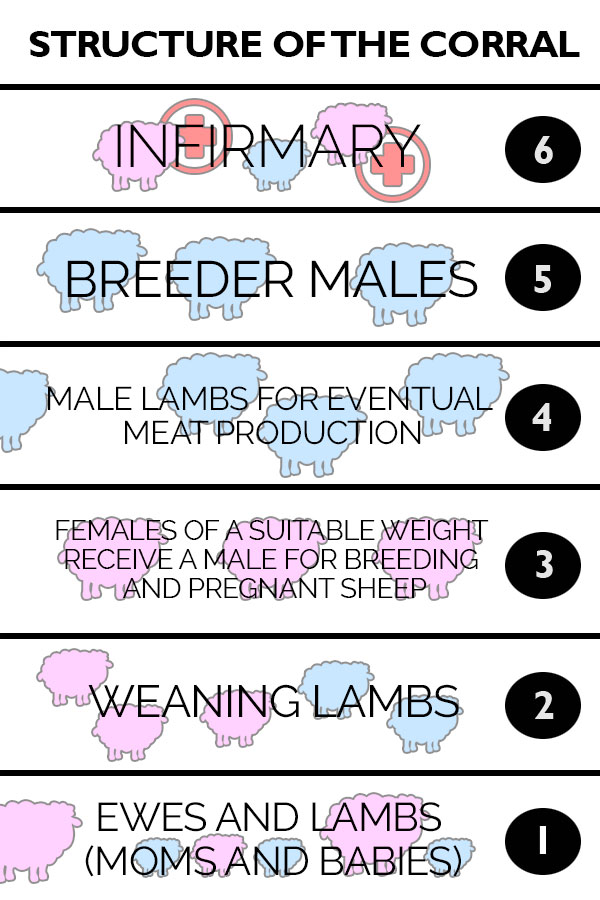The fine ovine
Back in the early 1990s when EARTH University began, pioneering professors took on the task of finding the ideal spaces to construct various farms. The University would one day include an agroforestry operation, an integrated organic farm, a robust peri-urban garden and an animal unit, among others, to offer students a fuller perspective of agriculture.
In 1993, EARTH’s 622-acre livestock farm welcomed its first four-legged lodgers. Today the space offers students 13 learning focus areas – from waste management to horse handling – during their twice-weekly work experience course. The farm also employs 13 people who oversee and carry out the day-to-day support work required by all resident species.
“We currently have around 250 cattle, two buffalo, 120 pigs, 100 sheep, 2,000 tilapia and 22 horses,” said Jesús Quesada, the animal farm’s administrator. “Our cows produce 260 to 270 liters of milk per day – approximately 10 liters per cow – for domestic consumption as milk, cheese and yogurt. As for pigs, the University cafeteria uses 12 to 15 a month.”
CLOSING LOOPS
For EARTH, creating closed-loop systems is very important, as it is a requisite trait of sustainable agriculture. The animal unit advances this concept in three main ways.
- Out to pasture: EARTH animals wander pastures consuming grass. Any excretions found near their residences are collected to make bokashi, which is later returned to the pasture.
- Making gas: Milking residues feed the biodigester, and the leachate byproduct is used as an all-natural fertilizer for the pastures. The cafeteria staff uses the resulting biogas to cook meals for EARTH’s hardworking students.
- Pigging out: Any food waste from the cafeteria is heated to ensure no communicable human illnesses remain, and then it is feed to the pigs.

The cafeteria’s scraps and waste are returned to the farm, heated and fed to pigs, thus creating a near-circular system of inputs and outputs.
MEET THE SHEEP
Sheep (Ovis aries) are four-legged, ruminant mammals typically kept as livestock. Like all ruminants, sheep have hooves with an even number of toes. Although the name “sheep” applies to many species in the Ovis genus, in everyday usage it almost always refers to Ovis aries.1
A sheep’s gestation period is approximately five months, and a ewe usually gives birth to one or two offspring per pregnancy. A lamb remains at its mother’s side for at least two and a half months after birth.
CARBON HOOFPRINT
In a British study by environmental consultant Anthony Kleanthous that ranked the environmental impact of livestock activities, including poultry and dairy production, sheep production had the smallest environmental footprint by far.2
That does not mean it’s without its challenges. From droughts affecting Australia, Africa and the Middle East to the overexploitation of pastures in the same areas, herd numbers have suffered and global production has dropped. Worldwide demand for cheap wool has not helped.3

Lamb meat must compete not only with staple meats (beef, pork, poultry) but often also with special meats (veal, venison, piglet). It is considered a delicacy.
GETTING INTO SHEEP
Quesada says the cattle ranch staff received a herd of 25 sheep for a pasture project, in addition to a group of animals that came from the EARTH-La Flor campus in Guanacaste, Costa Rica. First, they carried out the identification and categorization of each sheep, and now improvements to the corral are being made. Due to the hot and humid conditions of EARTH’s campus, sheep can only be used for meat – not for milk or wool production.
The objective of EARTH’s sheep production project is to devise improved animal management methodology while also generating a sustainable source of income. To ensure sheep are healthy and saleable, they are fed a very particular diet of pasture grass, along with a University-made concentrate containing vital nutrients and minerals not found in roughage.
“We have a little more than two hectares of pasture with different plant varieties. We make divisions within the herd so each group of sheep or lambs grazes what corresponds to them,” said Mastercard Foundation Scholar Manfred García (‘17, Costa Rica).
“When I started at the University, I wasn’t interested in smaller ruminants. However, in second year, I did a mini internship in goat agriculture and realized smaller ruminants were really my thing,” Manfred said. He also completed his third-year, trimester-long internship at Meredith Dairy, an Australian farm specializing in sheep and goats. Today he serves as the student leader of the sheep operation.
CORRAL DIVISIONS
The sheep are divided into six areas within the corral:
– Group 1: Ewes and lambs (moms and babies)
– Group 2: Weaning lambs
– Group 3: Females of a suitable weight receive a male for breeding and pregnant sheep
– Group 4: Feeding of male lambs weighing approximately 30 kilos increase muscle for eventual meat production
– Group 5: Breeder males
– Group 6: The infirmary for any sick or injured animals

Manfred García (‘17, Costa Rica), Denis Gutiérrez (‘20, Belize), Fernando Zambrano (‘19, Ecuador) and Edwin Estrella (‘18, Ecuador) are some of the students who have worked on recent corral and pasture renovations. Their next step is writing a management guide for future students who work within the ovine unit. “I’m sure we can become a model for producers in the area, and I think the improvements we’ve made will help the farm attract tourists,” Manfred said. “We just need to add informative signs for each section of the corral.”
GETTING MUTTON ON THE MENU
Manfred advises those wanting to venture into raising sheep to first identify a potential market for the product. Then, if the animals are to be purchased, it’s best to acquire them from the same area or one with a similar climate to where they will live. Finally, Manfred recommends keeping the animals on the same diet to which they are accustomed while making any necessary dietary adjustments gradually.
Consumption of mutton (sheep meat) is common, often consumed during Islam’s Ramadan and Eid and Christianity’s Easter and Christmas. Global production is primarily concentrated in China, Australia and New Zealand, as well as Morocco, India, Russia and Kazakhstan.
“Lamb meat is different. It’s very soft, and, for my taste, it’s the best,” Manfred said.

Lamb meat is a protein-rich food (chops 15.4 g, palettes 17.6 g and legs 19 g). It provides a number of important micronutrients, especially B vitamins, such as B12, B6 and B3 (niacin). It is also a source of minerals such as phosphorus, iron and zinc.5 The table above was prepared by Carlos Orozco, professor of Sustainable Agricultural Systems at EARTH.
Thanks to talks between Manfred and the University cafeteria, lamb meat has been added to the menu once per month as a trial. It’s an unfamiliar taste to the Costa Rican palate. Depending on the outcome of scheduled tastings, the meat could appear more frequently on the menu and further cement sheep production as a profitable learning tool at EARTH.
Have you tried lamb? Is it a staple in your diet? Let us know!
References used to write this article:
1: https://en.wikipedia.org/wiki/Sheep
2: http://www.eurocarne.com/daal?a1=boletin_imagenes&a2=18409.pdf
3: http://www.eurocarne.com/daal?a1=boletin_imagenes&a2=18409.pdf
4: http://www.teletica.com/noticias/77568-produccion-de-cordero-toma-fuerza-en-el-pais.note.aspx
5: http://corderoscapulin.webs.com/informacionnutritiva.htm





